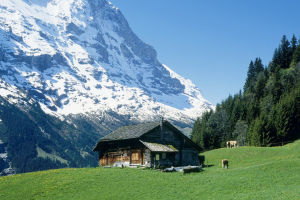Agriculture plays a significant role in the economies of European countries, with varying degrees of development across the region. The agricultural sector contributes to food security and employment, especially in rural areas.
In this article, we will explore the different levels of agricultural development in Europe and the factors that influence them.
Firstly, it is important to note that European agriculture is highly diversified, with each country having its unique strengths and challenges. For instance, British agriculture is known for its animal husbandry, with livestock farming accounting for over 60% of the sector. On the other hand, French agriculture is renowned for cheese production, with 1,200 different types of cheese. This diversity of products is also reflected in other European countries such as Spain, Italy, and Greece.
Besides, agriculture in Europe has undergone significant modernization and technological advancements over the years.
In the Netherlands, greenhouse farming has been adopted on a large scale, allowing for year-round cultivation of vegetables, fruits, and flowers. The use of greenhouses has improved the quality and quantity of crops produced, making the Netherlands a major exporter of horticultural products. Similarly, utilizing artificial intelligence, drones, and precision agriculture techniques to optimize crop yields and reduce water usage. These modern farming practices have significantly increased productivity while minimizing environmental impact.
The level of agricultural development in Europe is also influenced by policies and subsidies. For instance, the Common Agricultural Policy (CAP) of the European Union (EU) provides subsidies to farmers to ensure food security, support rural development, and promote sustainable farming practices. CAP has contributed significantly to the development of the agricultural sector in many European countries. However, critics argue that it favors large-scale commercial farming at the expense of small-scale and family-owned farms.
Climate patterns are also crucial factors in the level of agricultural development in Europe. Countries in northern Europe, such as Sweden, Finland, and Norway, have shorter growing seasons due to their colder climates.
Therefore, they mainly focus on animal husbandry, dairy farming, and cereal crops that can withstand harsh weather conditions. In contrast, southern European countries such as Spain, Italy, and Greece have longer growing seasons and milder climates, allowing for the cultivation of a wide range of crops such as fruits, vegetables, and olive oil.
Moreover, agricultural development in Europe is influenced by changing consumer trends and preferences. With the increasing demand for organic and sustainable produce, many farmers are adopting eco-friendly farming practices such as agroforestry and integrated pest management. The rise in veganism and plant-based diets has also affected the type of crops produced and the methods used in farming.
The level of agricultural development in Europe varies from country to country and is influenced by factors such as climate, government policies, consumer trends, and technological advancements. Each country has its unique strengths and challenges, and the sector continues to evolve to meet the changing demands of the market.
However, it is essential to ensure that agricultural development is sustainable and environmentally friendly to preserve the future of food production in Europe.


